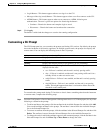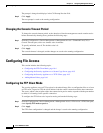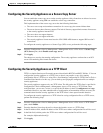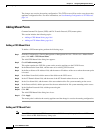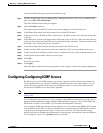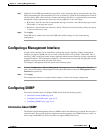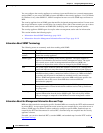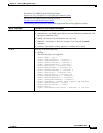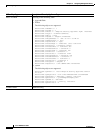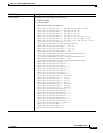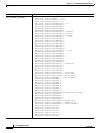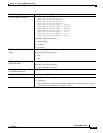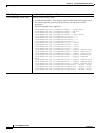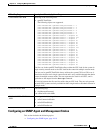
16-10
Cisco ASDM User Guide
OL-16647-01
Chapter 16 Configuring Management Access
Configuring SNMP
You can configure the security appliance to send traps (event notifications) to a network management
station (NMS), or you can use the NMS to browse the MIBs on the security appliance. Use CiscoWorks
for Windows or any other SNMP V1, MIB-II-compliant browser to receive SNMP traps and browse a
MIB.
The security appliance has an SNMP agent that notifies designated management stations if events occur
that are pre-defined to require a notification, for example, when a link in the network goes up or down.
The notification it sends includes an SNMP OID, identifying itself to the management stations.
The security appliance SNMP agent also replies when a management station asks for information.
This section includes the following topics:
• Information About SNMP Terminology, page 16-10
• Information About the Management Information Base and Traps, page 16-10
Information About SNMP Terminology
The following terms are commonly used when working with SNMP.
Information About the Management Information Base and Traps
MIBs are either standard or enterprise-specific. Standard MIBs are created by the IETF and documented
in various RFCs. A trap reports significant events occurring on a network device, most often errors or
failures. SNMP traps are defined in either standard or enterprise-specific MIBs. Standard traps are
created by the IETF and documented in various RFCs. Standard traps are compiled into the security
appliance software.
If needed, you can also download RFCs, standard MIBS, and standard traps from the IETF website:
http://www.ietf.org/
Term Description
Management
stations
The PCs or workstations set up to monitor SNMP events and manage devices
such as the security appliance.
SNMP Agent The SNMP server running on the security appliance. The agent responds to
requests for information and actions from the management station. The agent
also controls access to the its management information base (MIB), the
collection of objects that can be viewed or changed by the SNMP manager.
OID The system object identifier (OID) that identifies a device to its a management
station and indicates to users the source of information monitored and displayed.
MIB Management Information Bases, or standardized data structures, for collecting
information about packets, connections, buffers, failovers, etc. MIBs are defined
by product and the protocols and hardware standards used by most network
devices. SNMP management stations can browse MIBs and request specific data
or events be sent as they occur. Some MIB data can be modified for
administrative purposes.
Trap Predefined events that generate a message from the SNMP agent to the
management station. Events include alarm conditions such as link up, link down,
or syslog event.
Browsing Monitoring the health of a device from the management station by pulling
required information from the device SNMP agent. This activity may include
doing an snmpget or snmpwalk of the MIB tree from the management station.




